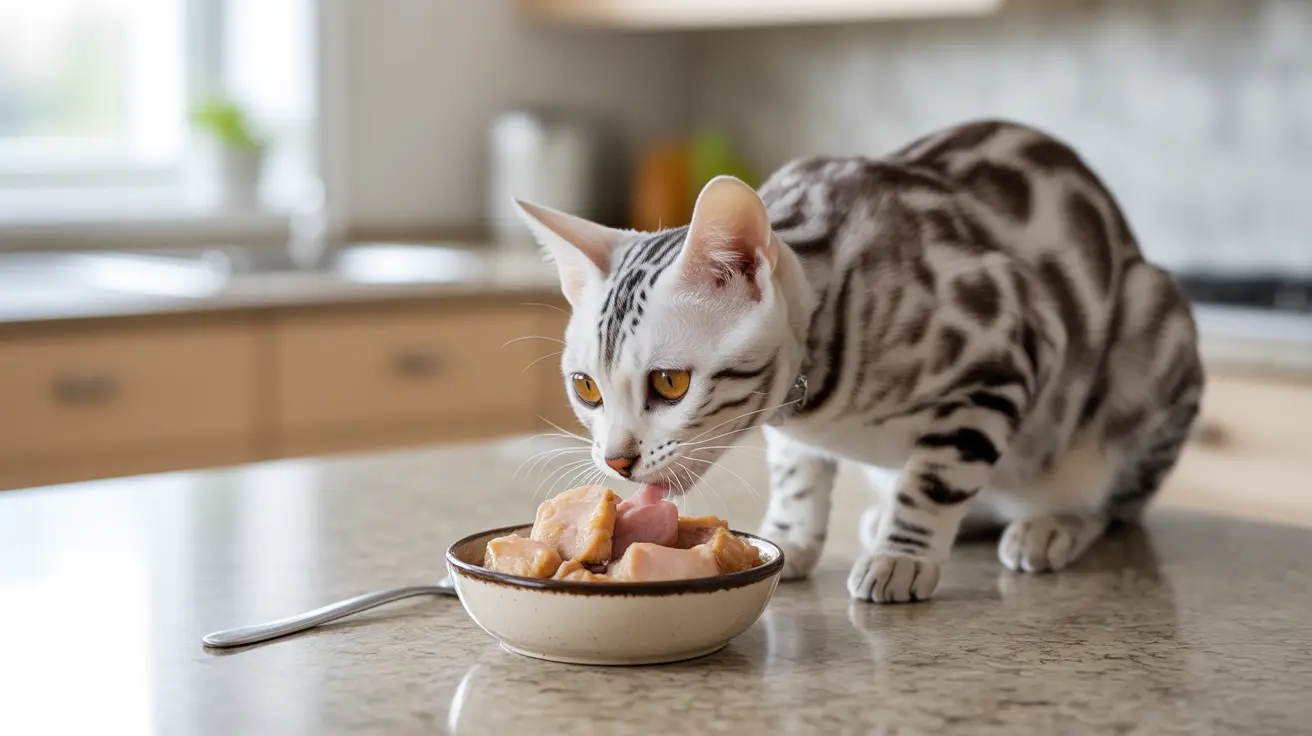As a cat owner, you've probably wondered what foods cats can eat besides their regular kibble or wet food. While cats are obligate carnivores who primarily need meat-based protein, certain human foods can be safely shared with your feline friend as occasional treats. This comprehensive guide will help you understand which foods are safe for cats and how to introduce them properly into your pet's diet.
Understanding safe human foods for cats isn't just about treating your pet—it's about ensuring their health and safety. While some human foods can provide additional nutrients and variety to your cat's diet, it's crucial to know which ones are safe and how to serve them appropriately.
Safe Protein Sources for Cats
Cats thrive on protein, and several human food protein sources are safe for feline consumption:
Cooked Meats
Plain, cooked chicken, turkey, and lean beef are excellent protein sources for cats. Always ensure the meat is:
- Thoroughly cooked
- Free from seasonings and oils
- Boneless and skinless
- Cut into small, manageable pieces
Eggs and Fish
Cooked eggs provide valuable protein and nutrients, while properly prepared fish offers omega-3 fatty acids. However, serve these in moderation and always fully cooked to avoid bacterial contamination.
Safe Fruits and Vegetables
While cats don't naturally seek out produce, some fruits and vegetables can be offered as occasional treats:
Vegetables
- Steamed broccoli (small pieces)
- Cooked carrots
- Plain green beans
- Cooked pumpkin puree
Fruits
- Small pieces of seedless watermelon
- Peeled, deseeded apple slices
- Banana (tiny portions)
- Blueberries
Proper Serving Guidelines
When introducing human foods to your cat's diet, remember these essential rules:
- Keep portions small (treats should not exceed 10% of daily caloric intake)
- Introduce new foods one at a time
- Watch for signs of digestive upset
- Always serve plain, unseasoned foods
- Cut into appropriate sizes to prevent choking
Foods to Avoid
Some human foods are toxic to cats and should never be offered:
- Chocolate
- Onions and garlic
- Grapes and raisins
- Raw meat or eggs
- Milk and dairy products
- Foods containing xylitol
- Caffeinated beverages
Frequently Asked Questions
What human foods can I safely feed my cat as treats without causing health issues?
Safe human foods include plain cooked meats (chicken, turkey, beef), cooked eggs, small pieces of certain fruits (watermelon, banana, apple without seeds), and vegetables (cooked pumpkin, green beans, carrots). Always serve these foods plain, without seasonings or oils.
Can cats eat raw eggs or meat, and what are the risks associated with these foods?
Cats should not eat raw eggs or meat due to the risk of bacterial contamination like salmonella. Always cook these proteins thoroughly before serving to your cat.
How much of a cat's diet should consist of human foods versus commercial cat food?
Human foods should make up no more than 10% of your cat's daily caloric intake. The remaining 90% should come from nutritionally complete commercial cat food to ensure proper nutrition.
What fruits and vegetables are safe for cats to eat, and how should they be prepared?
Safe fruits include small portions of banana, apple (no seeds), and watermelon. Safe vegetables include cooked pumpkin, green beans, and carrots. All should be plain, thoroughly cleaned, and cut into small pieces.
How can I ensure that my cat is not allergic to new human foods I introduce into their diet?
Introduce only one new food at a time and start with a tiny portion. Monitor your cat for 24-48 hours for any signs of allergic reactions or digestive issues such as vomiting, diarrhea, or changes in behavior. If any adverse reactions occur, discontinue the food and consult your veterinarian.
Conclusion
While cats can safely enjoy certain human foods as treats, their primary diet should consist of nutritionally complete cat food. When offering human foods, always prioritize safety, moderation, and proper preparation. When in doubt, consult with your veterinarian before introducing any new foods to your cat's diet.






